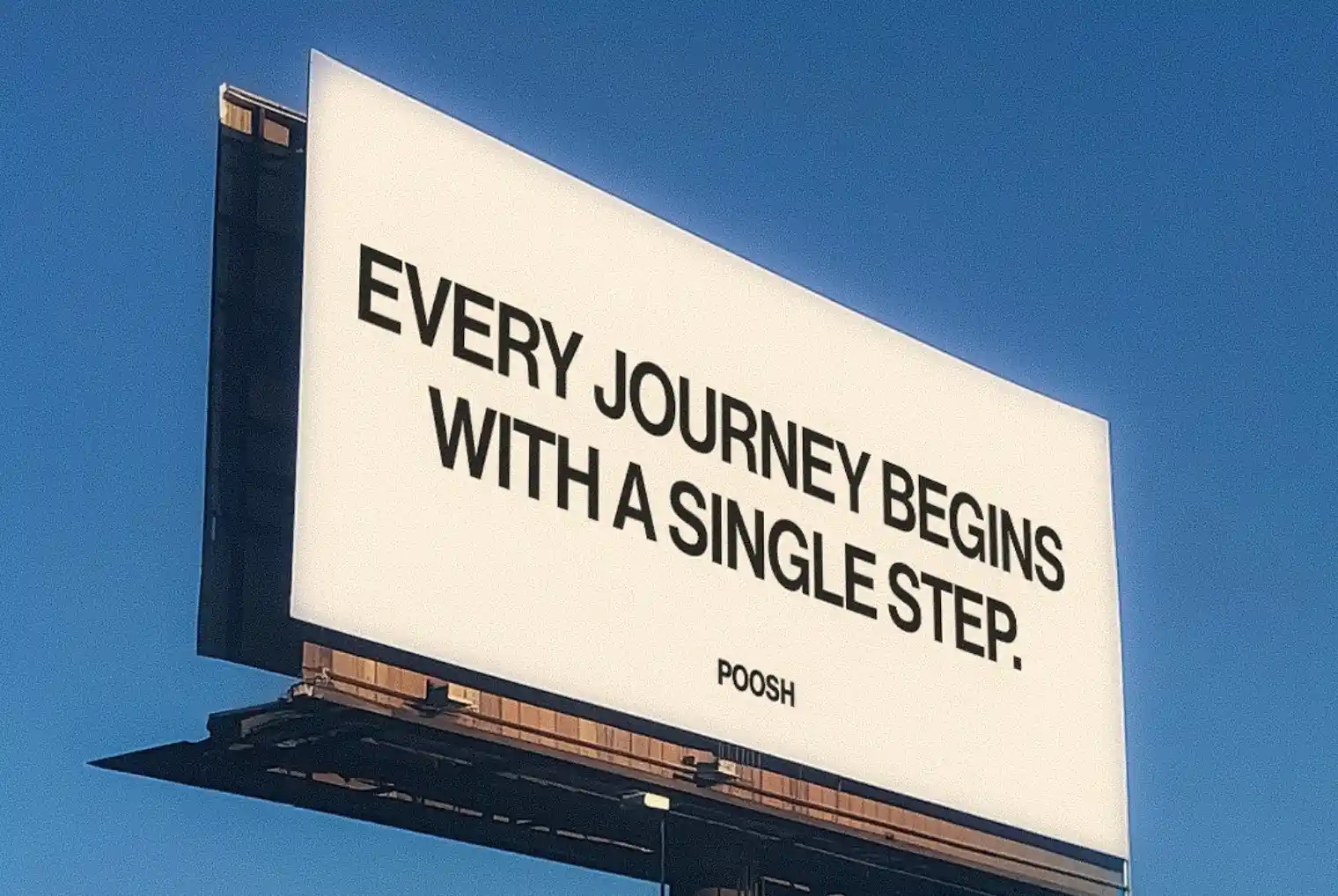Brad Pitt’s F1 Movie Marketing: Full-Throttle Strategy Breakdown
Updated on
Published on

If you thought a Formula 1 race weekend was already theatrical, imagine adding Brad Pitt, a nine-figure film budget, and Apple’s marketing war chest. With “F1: The Movie”—a $200-plus-million drama directed by Joseph Kosinski and produced by Jerry Bruckheimer, Lewis Hamilton, and Apple Studios—Hollywood and the paddock finally merged. The result? A two-year promotional campaign that moved as strategically as a championship-winning pit wall and as aggressively as a last-lap overtake at Silverstone. Below, I break down how the team built a campaign that dominated trailers, social feeds, F1 broadcasts, and even your iPhone home screen—giving marketers a master class in F1 movie 2025 marketing.
1. The Production Hook: Authenticity Gives the Campaign Its Fuel
From day one the filmmakers promised authenticity. Apple paid the FIA for unprecedented access: real garages, real tracks, real Grand Prix weekends. That decision unlocked priceless B-roll, organic crowd shots, and the ultimate endorsement—modern drivers lending credibility on camera. By locking those visuals into the marketing plan, the studio guaranteed every trailer and TV spot would scream “this isn’t CGI; it’s the real circus.”
Why it worked: Hardcore fans instantly saw familiar garages and marshals, while casual moviegoers just felt the adrenaline. Authenticity became the campaign’s badge of honor and its biggest talking point.
2. Phase-One Teasers: Super Bowl & Grid Stunts
Super Bowl LIX Teaser
Apple bought 60 seconds of airtime—football’s biggest stage—to drop a sound-barrier-breaking teaser. It was less narrative and more sensory overload: Pitt’s visor reflection, 200 mph onboards, 20000 rpm engine notes. Hashtags #F1Movie and #BradPittF1 trended before halftime.
Silverstone Grid Takeover
Six months later, fans at the British Grand Prix saw something surreal: Pitt and co-star Damson Idris lining up on the actual starting grid in APXGP overalls. Sky Sports commentators couldn’t resist; Twitter exploded with photos. That single appearance generated millions of dollars in earned media and content that would be recycled in every other promo beat.
Takeaway: Launch with a mass-market “hello” (the Super Bowl) then pivot to niche proof-of-concept (grid cameo) to keep both audiences hooked.
3. The Apple Ecosystem Surge
Apple’s in-house marketing looked like a software-update rollout:
- App Store banners featured the trailer barn-door-style at the top of the Today tab.
- Wallet push notification offered a $10 discount via Apple Pay—an instant call-to-action that converted scrollers into ticket buyers.
- Sports & Podcasts apps housed exclusive Q&As, while the Apple TV app served a haptic-enhanced trailer that literally rattled iPhones during cockpit shots.
- Apple Maps added 3-D fly-overs of Silverstone, Spa, and Yas Marina, each dotted with “film facts” pins.
I can’t recall a studio ever weaponizing its tech ecosystem so thoroughly. Users encountered the film whether they opened a map, checked football scores, or paid for coffee.
SEO angle: Every app banner carried phrases like “Watch the Brad Pitt Formula 1 movie”, hitting long-tail searches organically.
4. Hero Trailers Timed to Race Weekends
March Trailer Drop – Jeddah Weekend
Released on a Thursday—media day for most GPs—to hijack the racing news cycle. YouTube surged; so did F1-facing subreddits.
Final Trailer – Miami Grand Prix
Miami’s glitzy paddock doubles as Hollywood East, so the studio unveiled the two-minute showstopper on the giant Hard Rock Stadium screens before the qualifying session. Influencers filmed it, fans reposted, ESPN replayed. That synergy in front of 250 million weekend viewers? Free global ad spend.
5. Brand & Team Partnerships: $40 Million in Livery Space (Paragraphs + Point Forms, No Tables)
Securing authenticity wasn’t cheap, so the producers turned the fictional APXGP cars and race suits into rolling sponsorship canvases—pulling in an estimated $40 million in partner cash. This bold move didn’t just offset production costs; it embedded real-world branding into the movie’s DNA and guaranteed built-in cross-promotion. Each brand leveraged its own channels—automotive, luxury, gaming, or even fast food—to amplify the film’s visibility far beyond typical movie marketing.
- Mercedes-Benz: Supplied technical consulting, access to their F1 garage, and co-created behind-the-scenes vlogs featuring Toto Wolff explaining the hybrid power unit used in filming.
- IWC Schaffhausen: Launched a limited-edition “Sonny Hayes” pilot’s watch, complete with an APXGP-themed strap, and hosted VIP screenings in flagship boutiques.
- EA Sports: Integrated the APXGP car and Brad Pitt’s character into the EA Sports F1 2025 video game, fueling Twitch streams and YouTube gameplay videos that doubled as movie trailers.
- Expensify: Ran a quirky promo—expense your opening-night ticket and get reimbursed—turning receipts into social-media brag posts.
- McDonald’s (Latin America): Rolled out a “McMenu F1 The Movie” combo with collectible die-cast APXGP cars, plus in-restaurant simulators that let fans set hot laps on digital versions of Silverstone and Spa.
The result was a sponsorship ecosystem that felt less like product placement and more like a living, breathing extension of the Formula 1 universe—giving the film both financial horsepower and invaluable marketing megaphones.
6. Social Storytelling & Fan Engagement
- #F1Movie TikTok Challenge – Users posted 10-second “helmet-cam” clips set to the movie’s Hans Zimmer-produced score. Actor testimonials and F1 drivers stitched responses.
- Instagram AR filter – Fans added a digital APXGP pit-crew headset to selfies; nearly two million uses in the first week.
- Discord Watch-Along – F1’s official server hosted watch parties for each trailer, followed by live Q&A with the stunt coordinator who mounted 6K cameras inside the cockpit.
These activations bridged gamers, Gen Z TikTok wanderers, and hardcore race historians—without feeling like corporate intrusion.
7. Event-Driven Buzz: Met Gala, WWDC & Times Square
- Met Gala Helmet Reveal – Damson Idris arrived in full race suit, removed helmet to reveal a tux—every fashion outlet covered it.
- WWDC Cold Open – Apple began its developer keynote with Craig Federighi drifting across Apple Park’s roof, cutting to a trailer clip. Tech journalists became inadvertent film evangelists.
- Times Square Show Car – Day before U.S. release, the APXGP car idled on Broadway. Tourists recorded the engine rev; morning shows used it as B-roll.
Each stunt fueled mainstream headlines, ensuring the film stayed top-of-mind.
8. Distribution Playbook: Big Screens First, Apple TV+ Later
Warner Bros. handled cinemas; Apple claimed post-theatrical streaming rights. The release calendar avoided any live Grand Prix—smart, because you never want to split the fandom’s attention. Premium formats did the heavy lifting: IMAX delivered almost a quarter of domestic revenue opening weekend, proving fans crave the roar in surround sound.
9. Opening-Week Metrics & Momentum
- Global debut: $144 million—Apple’s highest-grossing launch to date.
- Domestic: $55 million, 30 percent above tracking estimates.
- IMAX share: 23 percent of U.S. box office, signaling premium-seat appetite.
- CinemaScore: A. Word of mouth turned neutral audiences into paying ones.
- McDonald’s toy resale: Tripled in value on collector sites, an anecdotal but potent measure of fan frenzy.
For Apple, the numbers validated its tech-meets-theater gamble; for F1, it meant fresh eyeballs ahead of the British Grand Prix.
10. Lessons for Marketers: What This Campaign Teaches Us
- Lean into authenticity – Real-world integration (live tracks, real drivers) beats green-screen fakery and sells itself.
- Exploit ecosystem reach – If you own the platform (Apple), use every app, notification, and device vibration to keep attention.
- Cross-pollinate audiences – Fashion, tech, gaming, fast food: each partnership unlocked new demographics without alienating purists.
- Narrative continuity – Stretch the story across two years of content beats so each race weekend feels like an episodic teaser.
- Premium experience messaging – Position IMAX and Dolby as “the only way” to feel the speed, and ticket buyers will pay up.
Final Lap
I’ve covered F1 for a decade and Hollywood nearly as long, and I’ve never seen a campaign fuse sport, tech, and cinema so seamlessly. “F1: The Movie” treated its marketing run like a title fight: pole position at the Super Bowl, fastest lap with that Silverstone grid stunt, and the victory parade during opening weekend. It bent platform algorithms, hijacked race broadcasts, and turned everyday apps into billboards. Most important, it respected the culture it borrowed from—the roar of a V6, the intensity of a pit stop, the devotion of fans. That respect made the hype feel earned and authentic.
For marketers eyeing their own blockbusters—sports-based or otherwise—the blueprint is now clear: embed, engage, and excite long before the lights go out. Then, when your film finally sees green, the audience will be strapped in and ready to race.







